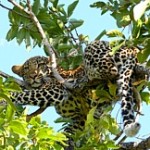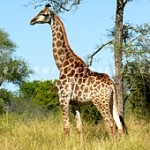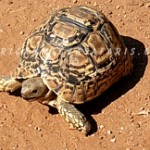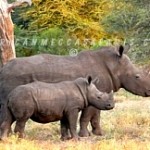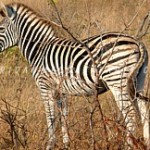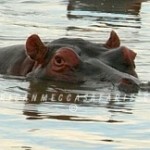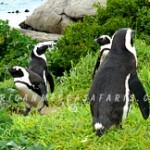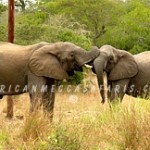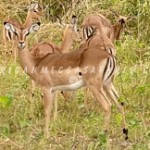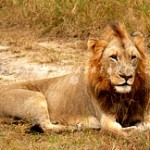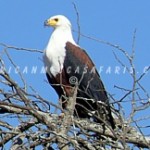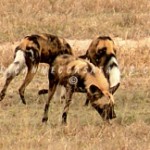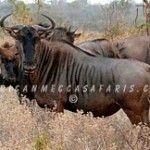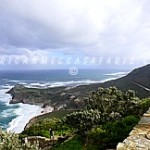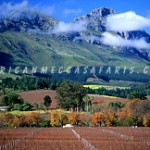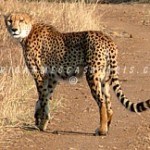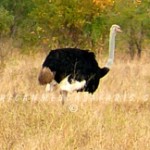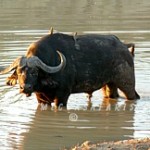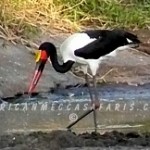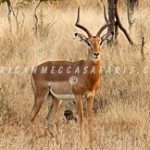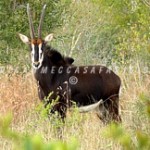Understand Safari Tier Ratings & Experiences In South Africa | Why Visit South Africa For Your Safari Vacation Or Holidays In Africa
SOUTH AFRICA FLORA & FAUNA
South Africa Flora
South Africa’s large areas of semi-desert scrub and grassland might suggest a certain poverty of plant life. Aside from the fact that a tract of pristine grassland can hold up to 60 grass species, nothing could be further from the truth. There are five major habitat types in South Africa: fynbos, forest, Karoo, grassland, and savannah. The country can also be divided into seven biomes, or ecological life zones, with distinct environmental conditions and related sets of plant and animal life: Nama Karoo, succulent Karoo, fynbos, forest, thicket, savanna, and grassland. Whichever classification is used, some 10% of the world’s flowering species are found in South Africa, the only country in the world with an entire plant kingdom inside its borders: the Cape Floristic Kingdom, which contains 8 600 species, 68% of them endemic. The Cape Peninsula alone boasts more plant species than the whole of Great Britain.
Fynbos
This southwestern area of South Africa is the home of the fynbos, which is composed of ericas (heathers), proteas and the grass-like restios. Most spectacular in flower are the proteas, which include the king protea – the national flower – and others of broadly similar shape, the pincushion leucospermum types and spiky leucadendrons. The colour range is vast. The ericas, the largest genus of flowering plants in South Africa, are more delicate, repaying close examination of their almost infinite variety of colour and form. One or other of these species will be found in bloom at almost any time of the year.
These share their Cape home with such beauties as the red disa orchid, one of South Africa’s 550 wild orchids, which grows in the mountains, as well as numerous irises, pelargoniums and many more. South Africa’s pelargoniums, in particular, have contributed greatly to gardens all over the world, as have the arum lilies – the classic white species is from this area, the yellow and pink from elsewhere in the country. The world’s gardens also have South Africa to thank for the agapanthus, gladiolus, Barberton daisy and Gardenia thunbergia, to name a few.
Carpet Of Flowers
The Cape in the spring is a breathtaking sight, but even more astonishing is Namaqualand. Dry, rocky and desert-like for the rest of the year, it yields its floral wealth for a short few weeks in the spring in dazzling sheets of colour. The golden yellow and orange Namaqualand daisies are predominant, but in between them are a wide variety of flowers, including the iridescent succulent mesembryanthemums. Colours here are particularly intense, although there is also much fascination in less colourful species such as the quiver tree (the San, or Bushmen, used to make quivers from its fibrous stem) and the bizarre-looking tall succulent known as the halfmens (half human). And anyone interested in plants’ abilitiesto adapt to harsh circumstances in a myriad different ways (not all are succulents) need not wait for spring to visit the area.
Forests
Although South Africa has more than a thousand indigenous trees, large species are relatively scarce in many parts of the country. But they are very much at home in some areas, such as the Knysna-Tsitsikamma forest with its tall stinkwoods, black ironwoods and yellowwoods, and the northeastern region in Mpumalanga and Limpopo, home to the ancient cycads and Lowveld species such as the fever tree – so called because of its association with malaria areas.
It is also in the north that one finds the famous thick-stemmed baobab, which according to African myth was accidentally planted upside down, accounting for the odd shape of its branches. Then there are the forests of KwaZulu-Natal, where the beautiful shade-loving orange Clivia miniata, a now much cultivated member of the amaryllis family, is found. Another popular orange (and purple) garden flower, now the emblem of the US city of Los Angeles, originates in the Eastern Cape: the strelitzia. In much the same color range, South Africa’s winters are marked by the flowering of some of the country’s 140 species of aloes. The Eastern Cape’s Greater Addo National Park, which stretches 200 kilometers from the coast to the Karoo, includes samples of six of the seven South African biomes mentioned above, lacking only the succulent Karoo.
Medicinal Plants & Thorn Trees
There is virtually no area of South Africa without its particular floral treasure or species of special beauty or interest. These include succulents that look almost exactly like stones (lithops), mangroves, tree ferns, traditional food plants and those that would kill you if you took a bite, and – one of the most promising fields of study in South Africa – a large number of plants of medicinal value. Some of these, such as the Aloe ferox, a purgative, were discovered to be medicinally useful by the early European colonists; many more have long been known and used by indigenous African people. Yet for all the spectacular plants to be found, perhaps the landscape that most eloquently conjures up the spirit of South African flora is the typical savannah, with its (often dry) grasses and more-or-less thickly scattered shrubs and thorn trees. Lingering images may vary widely, from fynbos field to subtropical forest, but for many South Africans the thorn tree is the nesting place of their hearts.
South Africa Fauna
Mammals: Cities have grown, much land has been given over to farming, hunting has wiped out entire herds, and the times when a herd of spr ingbok could take days to pass through a Karoo town are long past. Yet, thanks to the foresight of conservationists past and present, South Africa remains blessed with abundant wildlife. Best known are the mammals, and the best known of these are the famous Big Five: elephant, lion, rhino, leopard and buffalo. South Africa’s bushveld and savannah regions are still home to large numbers of the mammals universally associated with Africa. The Kruger National Park alone has well over 10 000 elephants and 20 000 buffaloes – in 1920 there were an estimated 120 elephants left in the whole of South Africa. The white rhino has also been brought back from the brink of extinction and now flourishes both in the Kruger National Park and the Hluhluwe Umfolozi Park in KwaZulu-Natal. Attention now is on protecting the black rhino. Both these parks are home to all of the Big Five, as are other major reserves in South Africa such as Pilanesberg in North West province and numerous smaller reserves and private game lodges. Other quintessentially African large animals are the hippo, giraffe, kudu, wildebeest (the famous gnu) and zebra, all frequently seen in South Africa’s conservation areas. Heightened awareness, however, has created an increased appreciation of lesser known animals. A sighting of the rare tsessebe (a relative of the wildebeest) may cause as much excitement as the sight of a pride of lion. And while one can hardly miss a nearby elephant, spotting the shy little forest-dwelling suni (Livingstone’s antelope) is cause for self-congratulation. On the really small scale, one could tackle the challenge of ticking off each of South Africa’s seven species of elephant shrew – a task that would take one all over the country and, probably, a long time to accomplish. With well over 200 species, a short survey of South Africa’s indigenous mammals is a contradiction in terms. A few examples will help to indicate the range. In terms of appeal, primates rate highly. In South Africa they include the nocturnal bushbabies, vervet and samango monkeys, and chacma baboons which – encouraged by irresponsible feeding and under pressure through loss of habitat – have become unpopular as raiders of homes on the Cape Peninsula. Dassies (hyraxes, residents of rocky habitats) and meerkats (suricates, familiar from their alert upright stance) have tremendous charm, although the dassie can be an agricultural problem. The secretive nocturnal aardvark (which eats ants and is the only member of the order Tubulidentata) and the aardwolf (which eats termites and is related to the hyaena) are two more appealing creatures, and both are found over virtually the whole country. And for those who like their terrestrial mammals damp, there is the widely distributed Cape clawless otter, which swims in both fresh and sea water. The spotted-necked otter has a more limited territory. Both are rare, however, and difficult to spot. One mammal whose charm is recently acquired is the wild dog or Cape hunting dog, one of Africa’s most endangered mammals. Once erroneously reviled as indiscriminate killers but now appreciated both for their ecological value and their remarkably caring family behaviour, wild dog packs require vast territories. They are found in small numbers in the Kruger National Park and environs, northern KwaZulu-Natal (including the Hluhluwe-Umfolozi Park), the Kalahari, and the Madikwe reserve in North West province. More common canine carnivores are the hyaena, jackal and bat-eared fox. Feline carnivores – besides the big cats mentioned above – include the caracal with its characteristic tufted ears, the African wild cat and the rare black-footed cat. Other flesh eaters include the civet, genet and several kinds of mongoose. The plant eaters are well represented by various antelope, from the little duiker to the large kudu and superbly handsome sable antelope, which is found only in the most northerly regions.
Marine Mammals & Fish: The largest mammal of all – in South Africa and the world – is the blue whale, which can grow to 33 met res in length. But of the eight whale species found in South African waters (including the dramatic black-and-white killer whale), the most frequently seen by humans is the southern right whale. This imposing creature comes into coastal bays to calve, allowing for superb land-based viewing. The southern right whale represents one of conservation’s success stories. Once considered the “right” whale to hunt, its population became so depleted that it was designated a protected species. With the greater familiarity that their return to the coastal bays has produced, they are now as well loved as the many dolphins in South Africa’s coastal waters. South Africa’s seas are rich in fish species. Perhaps the most awesome of these is the great white shark, but this is only one of more than 2 000 species, comprising 16% of the world’s total. Various line fish, rock lobster and abalone are of particular interest to gourmets, while pelagic fish (sardines and pilchards) and hake have large-scale commercial value.
Birdlife: Birders from around the world come to South Africa to experience the country’s great variety of typically African birds, migrants, and endemics (those birds found only in South Africa). Of the 850 or so species that have been recorded in South Africa, about 725 are resident or annual visitors, and about 50 of these are endemic or near-endemic. Apart from the resident birds, South Africa hosts a number of intra-African migrants such as cuckoos and kingfishers, as well as birds from the Arctic, Europe, Central Asia, China and Antarctica during the year. South Africa’s birdlife ranges from the ostrich – farmed in the Oudtshoorn district of the Western Cape, but seen in the wild mostly in the north of the country – through such striking species as the hornbills to the ubiquitous LBJs (“Little Brown Jobs”). One small area alone, around the town of Vryheid in northern KwaZulu-Natal, offers wetlands, grasslands, thornveld and both montane and riverine forest, and around 380 species have been recorded there. A birder need not move out of a typical Johannesburg garden to spot grey loeries, mousebirds, hoopoes, hadeda ibises, crested and black-collared barbets, Cape whiteyes, olive thrushes … or a lone Burchell’s coucal poking clumsily around a tree. And that would by no means complete the list. Among the most spectacular birds of South Africa are the cranes, most easily spotted in wetlands – although the wattled crane is a lucky find as it is extremely uncommon. The beautiful blue crane is South Africa’s national bird, while the crowned crane is probably the flashiest of the three with its unmistakable prominent crest. Among its larger bird species, South Africa also has several eagles and vultures. Among its most colorful are kingfishers, bee-eaters, sunbirds, the exquisite lilacbreasted roller, and the Knysna and purple-crested louries.

